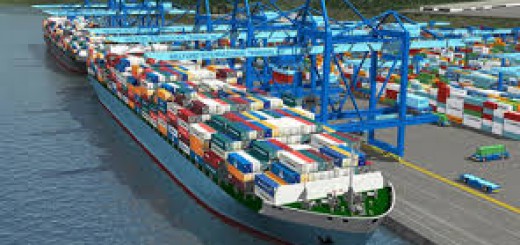Boosting Productivity and Reducing Costs in Pallet Shipping
Pallet shipping represents a significant aspect of today’s supply chain management landscape, demanding scrupulous attention to detail and innovative strategies. Companies constantly strive to streamline operations, reduce expenses, and meet growing consumer expectations. Below, we discuss actionable tips and best practices for achieving efficient pallet shipping outcomes.
Smart Pallet Selection
Various pallet styles and materials populate the marketplace, warranting discernment when choosing the most fitting choice. Contemplating factors such as durability, weight capacity, compatibility with automation, and cleanliness leads to judicious selections, culminating in safe transportation, prolonged lifespans, and restrained ecological impacts. Among widely utilized pallet variants are:
Woodblock Pallets:- Built from either hardwood or softwood slats affixed by blocks beneath, woodblock pallets showcase impressive strength and considerable weight limits. Weighing more susceptible to moisture ingress, they are reasonably priced and simply repairable.

Plastic Pallets:- Exhibiting lighter weights alongside notable resilience against liquids, chemicals, and pests, plastic pallets emerge as attractive options despite initial investments appearing steep. Albeit lacking sufficient thermal endurance, they counterbalance higher costs owing to longer lifetime utility.
Metal Pallets:- Featuring steel or aluminum compositions, metal pallets shine in scenarios requiring extraordinary payload capabilities and flame resistance. Still, they suffer from comparatively higher mass and denting vulnerabilities. Nonetheless, these attributes render them suitable for sterile surroundings mandating stringent hygiene requirements.
Corrugated Cardboard Pallets:- Economic and featherlight, corrugated cardboard pallets function adeptly in brief trips. Sadly, limited carrying capacities restrict applicability in heavy-duty domains.
Also Read:- The Primary Causes Of Shipping Delays
Load Configuration Optimization
Carefully planned layouts result in balanced, condensed shipments conducive to flawless handling and storage. Realizing these targets entails implementing thoughtful techniques prompting fewer accidents, broader carrier compatibility, and contented receivers:
- Strive for a maximal vertical rise while preserving symmetrical weight allocation.
- Immobilize articles firmly using shrink wrap, straps, or cushioning apparatus.
- Sequester equivalent-sized pieces collectively, averting irregular extensions.
- Insert slip sheets or corner supports strategically, defending susceptible facets.
Marking and Recordkeeping Essentials
Meticulous tagging and documentation facilitate seamless transport progression, suppress misunderstandings, and comply with statutes. Salient considerations encompass:
- Resilient labels divulge requisite facts, namely consignee coordinates, point persons, warning insignias, and potentially hazardous substances.
- Electronic code representations or RFIDs enable automated detection mechanisms.
- Compulsory customs files, business invoices, or bills of lading observing international directives.
- Authorizations for manual device entries within cramped quarters.
Shrewd Transportation Mode Assessment
Weighing the most appropriate transportation medium for given commodities rests on assessing parameters such as bulk ratios, travel ranges, timeframes, and atmospheric susceptibilities. Available modes span train, maritime, terrestrial, and skyward conduits, conveying disparate advantages and drawbacks. Balancing the pros and cons leads to wise decisions, resulting in quick departures, controlled spending, and reduced environmental impact.
Utilizing Freight Consolidation Opportunities
Pooling lesser assignments converging on comparable topographies creates synergistic leverage, producing economic dividends, amplified vessel occupation, and truncated debris. Two prominent aggregation approaches deserve examination:

Pool Distribution Schemes:- Unified consignments bound for nearby territories exploit mutual assets, magnifying operational potency.
Cross-Docking Operations:- Transferring incoming stockpiles straightaway onto outgoing units sidesteps intermediary warehousing delays, accelerating circulation speeds.
Also Read:- How to Build Transparent, Collaborative 3PL Relationships?
Adopting Eco-Friendly Policies
Integrating environmentally benevolent tenets into pallet shipping aligns with corporate social accountability ambitions, lowering greenhouse gasses, saving energy reserves, and limiting trash creation. Valuable undertakings embrace:
- Acquiring reusable or biodegradable pallets originating from sustainable resources.
- Minimizing transport legs and mechanized vehicle mileage via shrewd routing schemes.
- Obtaining low-emission machines driven by alternate fuels or electrical energy.
Ongoing Training and Security Protocols
Providing regular educational modules teaches proper handling skills, threat assessment procedures, and contingency responses. Additionally, equipping staff with protective gear, ergonomic tools, and mechanical lifting devices helps prevent workplace injuries and protects delivered items. Moreover, maintaining compliance with regulations regarding employee welfare, labor laws, and commercial contracts is essential for success.
Implementing Performance Metrics Monitoring
Tracking measurable indices provides clear evidence of achievements and flaws, prompting corrective actions. Furthermore, statistical analysis tools and collaborative methods foster creativity and camaraderie among all stakeholders involved.
Conclusion
Efficient pallet shipping relies on a holistic approach that integrates smart design, functional excellence, and eco-friendly practices. Moreover, thoughtful decisions regarding pallet alternatives, effective load structuring, and consistent record maintenance play a crucial role. Additionally, selecting appropriate transportation modes, exploring consolidation opportunities, and implementing sustainable practices contribute to success.
Regular improvement initiatives and engaged staff development are vital, while strict safety standards ensure reliability. Ultimately, as market dynamics shift rapidly, businesses that foster agile cultures capable of swift adaptation will thrive in the ever-evolving landscape of pallet shipping. Thus, adaptability becomes key to achieving prosperous outcomes.




Recent Comments